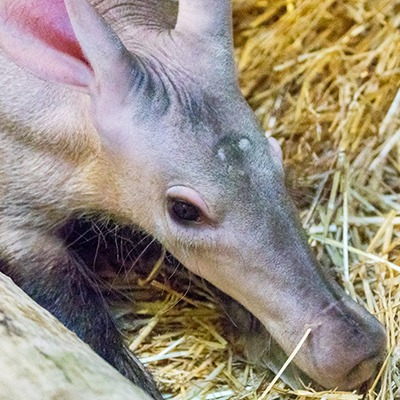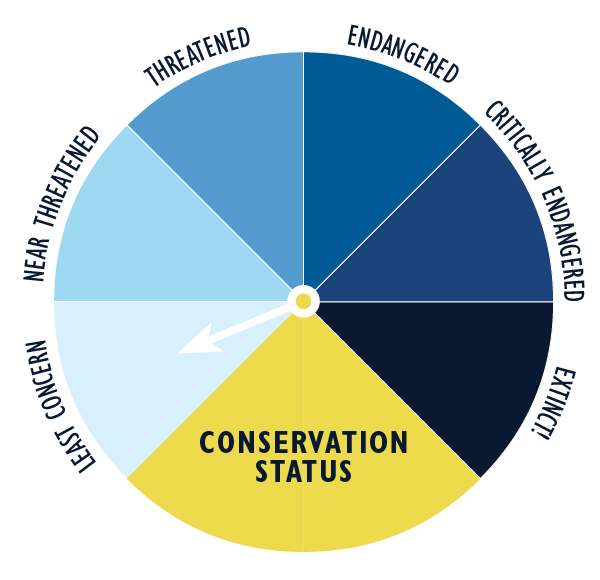
About Aardvark
The name of this fantastic digger means “earth pig” in the Afrikaans language. Aardvarks are the size of small pigs, but have very thick skin and do not possess a fat layer. They are notable for their long nose.
Habitat
A variety of habitats including grassland, savanna, and woodlands, south of the Sahara desert where there is enough food. They often live in temporary holes, but can also live in complex and intricate burrows which can have eight or more entrances and extend as much as 19 feet (6 m) underground.
Diet
Aardvarks eat at night and mostly eat ants and termites. They sweep the ants and termites into their small mouths with their long sticky tongues.
Family Life
Female aardvarks give birth in their burrow and the young remain underground for several weeks while maturing. Offspring are taken care of by the mother until they are independent at about six months, after which they dig their own burrows.
Conservation Status
The conservation status of the Aardvark is classified as least concern.
Threats
- Humans are the primary threat to aardvark populations, mainly due to habitat deconstruction and agriculture.
- Aardvarks face several natural predators in the wild as lions, leopards, and hyenas are known to hunt them. If confronted by a predator, an aardvark will attempt to dig a hole for shelter, taking about 10 minutes to completely cover itself up. If it cannot dig a hole, it will stand on its hind legs and tail, or lay on its back, and defend itself with its large front claws.
Facts about Aardvark
Class:
Mammalia (mammals)Order:
Tubulidentata (afrotherian mammals)Family:
Orycteropodidae (aardvark)Genus:
Orycteropus (aardvark)Species:
Orycteropus afer (aardvark)Life Span:
18 years (wild) / 23 years (zoo)Size:
3 – 5 feet (0.9 – 1.5 m)Weight:
88 – 180 pounds (39 – 81 kg)
Fun Facts
- Aardvarks have a long, flexible tongue and snout that are perfect tools for sucking up over 50,000 insects in one meal!
- They can’t see very well, but they have very good hearing and an exceptional sense of smell.
- Aardvarks have four toes on the forefeet and five toes on the hind feet, each ending in a spade-like claw that helps them to dig with great speed and force.
- Digging is used both to acquire food and as a means of escape.